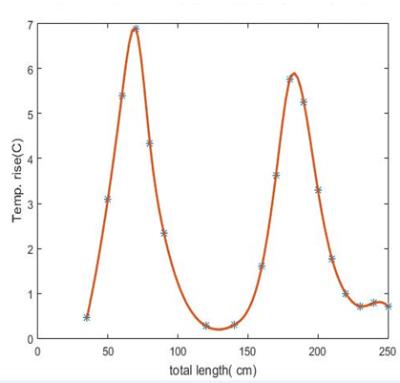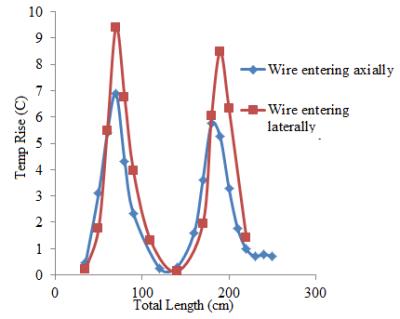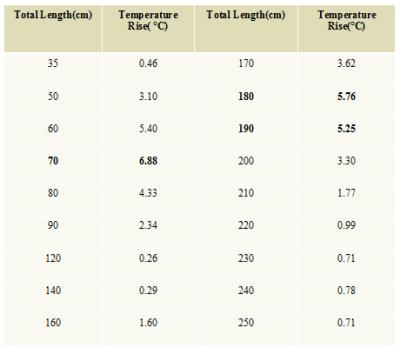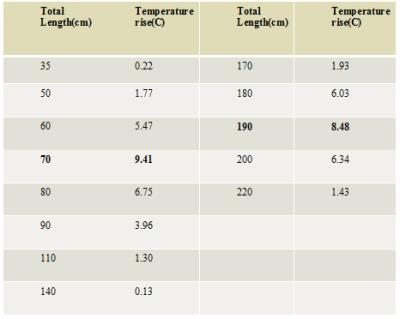2650
Dependence of RF-induced heating pattern during MRI of a single wire on its mode of entry in a dielectric medium1Imaging Institute, Cleveland Clinic, Cleveland, OH, United States, 2Physics, Case Western Reserve University, Cleveland, OH, United States
Synopsis
RF-induced heating of stereo encephalography (SEEG) electrodes during MRI scans could be of concern. Since the direction of entry of SEEG electrodes into brain can vary, heating of the tip of a single insulated copper wire (with bare tip) entering into a gel filled ASTM phantom axially (along the Z axis) and laterally (along the X axis) were measured as a function of the wire length. In this simple model of multi-wire multi-contact SEEG system, the resonating lengths (length with maximum heating) of the 2 configurations were same, while the lateral entry mode produced more heating.
Purpose
Functional MRI (fMRI) simultaneously with stereo electroencephalography (SEEG) has recently been shown to improve identification of epileptogenic zone (EZ), for subsequent resection as a cure for medically refractory focal epilepsy.1 As a safety measure of performing MRI with implanted SEEG electrodes, RF induced heating of SEEG electrodes in dielectric media similar to cerebral tissues have been reported.2,3. It has been shown that temperature in the tip of a guidewire can have excessive heating, when the length of the wire approaches certain resonating lengths.4,5 Since the SEEG electrode and the connecting extension cable can enter into the brain along the Z axis (straight and axially) or X axis (bent and laterally), in this study with a single wire model, we investigate the dependence of heating of a single wire as a function of the direction of entry (with respect to the B0 field) into the dielectric medium from air.Methods
All experiments were conducted in a whole body 3T Prisma scanner (Siemens Erlangen, Germany) with a transmit-receive (TxRx) head coil. Heating of a copper wire (250 cm long, 0.7 mm diameter) during a turbo spin echo (TSE) scan (TR = 6470 ms; TE = 71 ms; Flip angle = 1800; Turbo factor = 15; Echo trains per slice = 18) was studied. The specific absorption rate values of the sequence were whole body: 0.2 W/kg, exposed body: 2.8 W/kg, head: 2.8 W.kg, time averaged RF power: 8.3 W. The wire was insulated with polyvinyl chloride (PVC) throughout the length, except for 2 mm at the tip (similar to the tip of a real electrode). An ASTM torso phantom was filled up with polyacryclic gel6 having similar conductivity as human tissue. Two different experiments were carried out with (i) the wire entering the phantom along the Z axis at a position 2 cm inside from the lateral surface of the phantom and with 9 cm of its length in the phantom and (ii) the wire entering the phantom along the X axis with the wire bent and entering from the side of the phantom with 9 cm of its length in the phantom (Fig. 1). The tip of the wire was close to where the midline of the brain would be for an in vivo scan. For each experiment, the length of the wire was changed by cutting the portion of the outside end keeping the inside portion length fixed at 9 cm. Temperature change for each length of the wire tip during the TSE scan was measured using fluoroptic temperature sensor (model m3300, Luxtron (Lumasense Technologies), Santa Clara, CA, USA). Sufficient time was allowed between subsequent measurements to allow the system to cool down to baseline temperature.Results and Discussion
The temperature rise of the wire tip for different lengths for wire entering axially is shown in Table 1 and Fig. 2. The 1st two resonances, as determined from the local maxima, were at total lengths of 70 cm and 185 cm. Separation between the resonances was 115 cm, which is half the wavelength (λ) in air at 3T. The temperature rise of the wire tip during the TSE scan as a function of different total lengths for the wire entering the phantom laterally is shown in Table 2. The TSE sequence, not used in vivo, is used here to generate high power (~4-5 times higher than echoplanar imaging for fMRI). Fig. 3 shows that the resonance lengths under the 2 different scenarios are about the same. However, the temperature rise for both the resonance lengths is ~2.50C higher in the case of laterally entering wire. This possibly is due to the wire being closer to the Tx body coil in case of the wire entering laterally in the phantom. The similarity in resonance length and hence the wire temperature rise pattern suggests that the lengths of a conducting wire to avoid while entering into the tissue is same in either case. A SEEG electrode has multiple contacts – and hence this is the simple (single contact) model of what would be used in real life. But this model suggests that temperature rise is more when the wire (i) is closer to the Tx RF coil and (ii) is at resonance length.Conclusion
RF-induced heating of a single insulated wire exposed at the tip increases at specific resonance lengths, and the resonance lengths are independent of the mode of entry (axial or lateral) into a conducting dielectric medium. The heating is higher as the wire gets closer to the Tx coil.Acknowledgements
This research was supported in part by Cleveland Clinic Epilepsy Center.References
Figures

Fig. 1. Schematic representations
of axial and lateral modes of entry of single wire into a phantom filled with
polyacrylic gel.

Fig. 2. Heating of the tip of a
wire entering axially into the phantom as a function of the total length of the
wire. The resonance lengths are separated by λ/2.

Fig. 3. Resonance lengths of wires
entering axially or laterally into the phantom experiences similar resonance
lengths but the wire entering laterally experiences higher heating.


Table 2. Temperature of the wire tip at different lengths of
the wire entering laterally. The length inside the phantom gel was constant at
9 cm. The region of lengths at which maximum temperature rise was observed are
indicated in bold font.